Plant Description
The Ficus Lyrata, or fiddle leaf fig tree, can quickly spruce up any room. This tropical West African plant features large green, glossy, heavily veined violin-shaped leaves that grow rapidly on a tall plant. The large prominent veins of the leaves promote photosynthesis and soak up humidity. Make sure the fiddle leaf gets plenty of filtered light and an occasional misting. Unlike their outdoor sisters, when grown indoors, figs do not produce fruit. If you’re looking for a rock star air purification plant, look no further, this is one of the best you can invite into your home.
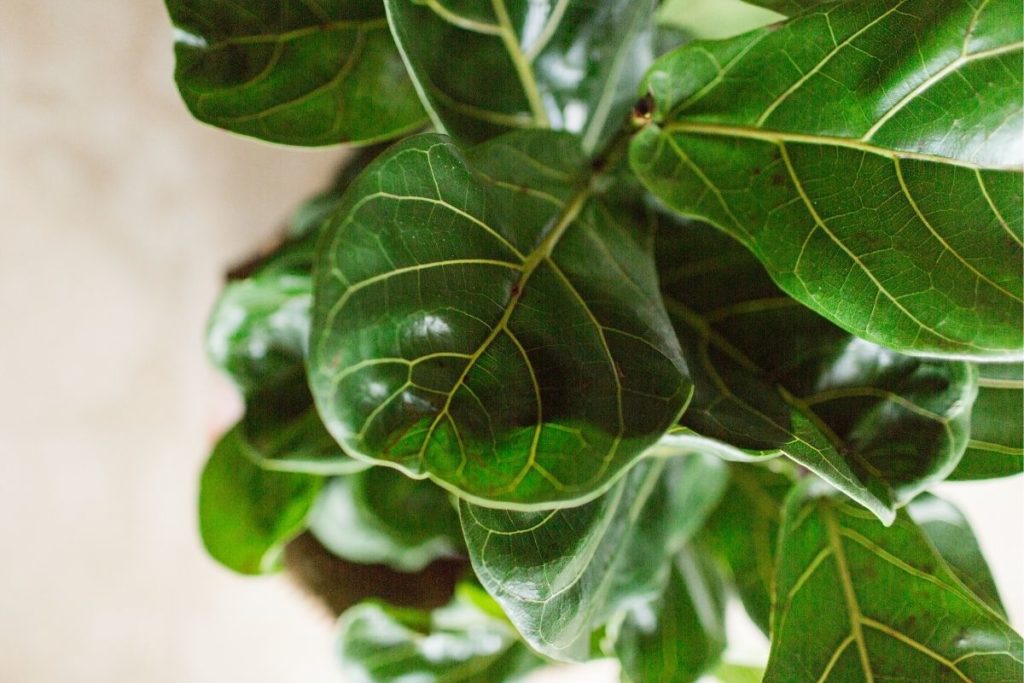
Ficus lyrata plant facts
| common names | Fiddle Leaf Fig, Banjo Fig, Lyre Leaf Fig |
| botanical name | ficus lyrata |
| mature size | 8 inches to 8 feet |
| time to maturity | 1-2 growing seasons |
Popular Varieties/Related Plants:
- Ficus lyrata ‘Bambino’: This dwarf variety only grows to a few feet.
- Ficus lyrata ‘Variegata’: This beautiful variegated hybrid has leaves that grow upright with creamy yellow tips.
- Ficus lyrata ‘Compacta’: This variety reaches a top height of 5 feet tall and has smaller leaves than the full-sized fiddle leaf fig.
How to take care of a ficus lyrata (fiddle leaf fig)
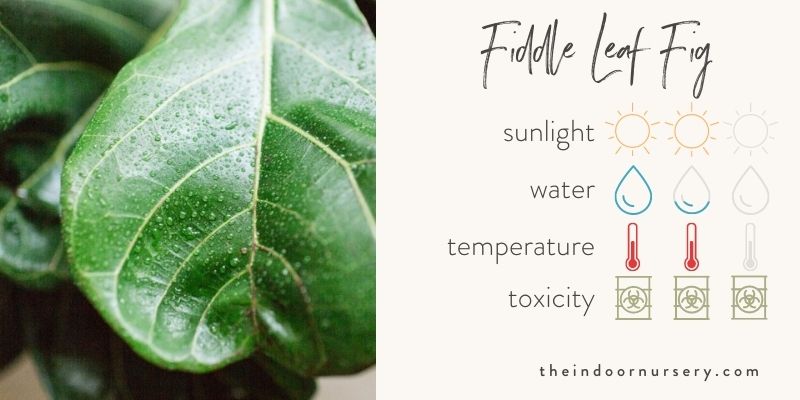
Ficus lyrata light requirements 🔆
Best light: Bright filtered light
A nice bright corner near an East or South facing window is the perfect place for your Ficus. Some figs in the jungle find themselves growing in the branches of larger trees and send aerial roots down to the forest floor. Think of the forest canopy and filtered sunlight when choosing a spot for your plant. The happiness of your ficus is quite noticeable when they get just enough light. When exposed to direct sunlight the oval-shaped leaves tend to burn.
Ficus lyrata water requirements 💧
Water needs: once per week or when the top 2 inches of soil are dry
The roots of the fiddle leaf fig prefer to be moist, but not saturated. During the growing season (spring to fall) water when the top 2 inches of soil feel dry. In winter watering more sparingly is recommended. Consider a floor-standing container with plenty of drainage. Too much water can cause root rot while too little water will make the plant drop leaves. Make sure to use room temperature water to emulate the tropics. A moisture meter will help you keep an eye on soil moisture levels.
Ficus lyrata humidity requirements 🌫️
The tropical humid jungles of Cameroon are home to this African fig. Even though they can be demanding plants you can recreate these steamy conditions at home by occasionally giving the violin-shaped leaves a good misting with a spray bottle. In particularly low humidity or dry-air climates consider a small humidifier to make your plant feel more at home. You may also consider giving the fiddle leaf the warm moisture it craves by placing it in the bathroom if it’s nice and bright.
Ficus lyrata temperature requirements 🌡️
Maintaining a consistent room temperature between 60-85°F will help the fiddle leaf fig thrive. Avoid placing the fig in drafty areas with large temperature fluctuations. Even though this is a hearty species and can survive temperatures down to 50°F, it’s best to avoid prolonged cold exposure.
Ficus lyrata fertilizer requirements💩
Choose an organic. all-purpose or fiddle leaf fig fertilizer with an NPK (Nitrogen, Phosphorus, Potassium) ratio of 3-1-2. Apply once per week throughout the growing season. Some companies offer a very specific fiddle leaf fig fertilizer that will keep your plant thriving indoors.
Ficus lyrata soil requirements
Soil Type: 1 part peat moss/coco coir, 1 part perlite, and 2 parts organic soil
pH level: 5.5-7.0
A well-draining soil that simulates the forest floor is ideal for the fiddle leaf fig because it really dislikes soaking feet. Choosing the right mix will help the plant avoid fungal diseases, dead leaves, and brown spots.
Repotting fiddle leaf figs
Repot the Ficus lyrata annually each Spring and increase the pot size by 2-4 inches in diameter. Start by removing topsoil carefully and gently placing the pot on its side. Use a small shovel to gently loosen the potting mix around the root ball of the ficus. Place the shovel as deeply as possible under the plant and gently leverage it from the pot. Support the fig by its base, place it into the new pot and then infill around it with plenty of fresh potting mix.
Propagating fiddle leaf figs 🌱
The easiest and most effective way to propagate the fiddle leaf fig is with stem cuttings. Simply cut a stem 12 to 18 inches long at a 45° angle. Remove all the large leaves except for one. Dip the cut portion of the stem in powdered rooting hormone. Place the stem in a jar of water and give it plenty of filtered light. Change the water periodically to avoid algae. In three to four weeks once the roots are an inch or longer plant into a one-gallon pot filled with the proper soil. Viola, your Ficus lyrata has a new friend!
Pruning fiddle leaf figs 🌿
It’s best to prune fiddle leaf figs on a new moon in the spring or early summer. Take a moment before pruning to visualize how you’d like to transform your plant. Start with any crossing branches and damaged leaves. Next, you can prune a new shape into your ficus. Cut at least half an inch away from the trunk and leaves. When grown outdoors in your Garden the fiddle leaf can reach heights of 50 feet. Luckily, when grown inside, if your fig outgrows its home simply top the plant by cutting the trunk at the very tip with sterilized pruning shears. Water generously and apply fertilizer to help aid a quick recovery.
Pests and diseases 🐛
Some common pests you may encounter with these plants include aphids, scale, whiteflies, and spider mites. Try and catch these pests early and wipe them away with a damp soapy cloth. If they persist, look for an organic pest control option. Bacterial and fungal diseases can be an issue when you’ve overwatered your fiddle leaf fig. Reduce your water inputs and treat as soon as possible with an organic fungicide or bactericide. You can also mix neem oil for an easy and effective treatment method.
Ficus lyrata plant care tips
- Salt rinse– High salt levels may accumulate in the soil. Rinse your plant monthly to remove unwanted salt.
- Swiveling floor stand – A swiveling floor stand will help you easily move larger figs monthly to give your plant an even growth pattern.
- Wipe the dust off leaves with a damp soft sponge or damp cloth once per week – Your plant’s large green leaves will thank you by staying healthy and converting CO2 to Oxygen with greater ease.
- Take care with pets – The fiddle leaf fig is poisonous to dogs and cats if ingested. You may consider another house plant to protect your furry friends.
Common Problems / FAQs:
Why do my fiddle leave fig’s leaves have dark brown/red spots?
When grown in less than perfect conditions your fig may be suffering from root rot. Adjust your water schedule and only water when the top 2 inches of soil are dry to the touch.
Why are my fiddle leaf fig leaves turning red and yellow?
Your fiddle leaf is getting too much direct sunlight. Relocate your plant to a position that receives indirect sunlight.
Do damaged leaves repair themselves?
Unfortunately, once the leaves are damaged they cannot be revived. You may remove damaged leaves, but don’t prune off more than 10% of the total leaves at once.
Why is my ficus lyrata losing leaves?
These plants are notoriously sensitive to being overwatered. Make sure you are not watering too often and confirm that your pot has sufficient drainage.
Why is my fiddle leaf dropping leaves?
Make sure your fiddle leaf is getting enough water. As soon as the top 2 inches of potting mix feel dry add water.
Shop our recommendations
- The Best Hydroponic Tower For Indoor Gardening
- 10 Best Worm Composter Bins For Easy Homemade Compost
- The Best pH Meter For Soil
- The 6 Best Dehumidifiers For Grow Tents
- The Best Complete Indoor Hydroponic Grow System
- 5 Best Grow Light Strips For Indoor Plants
- TESTED: Aerogarden vs Click and Grow Smart Garden
- Our *hands on* MARS HYDRO TSW 2000 review (with photos)
- 7 Best Hygrometers For Indoor Plants
- The Best Coco Coir For Your Plant’s Healthiest Root System Ever

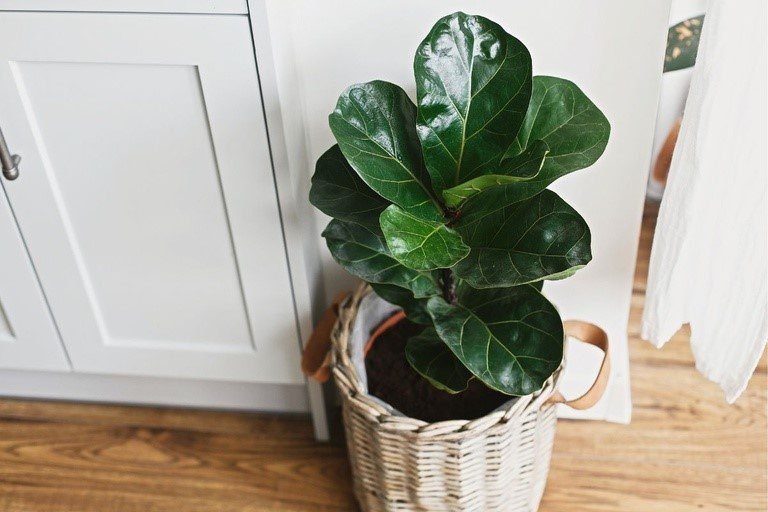
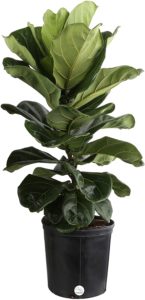


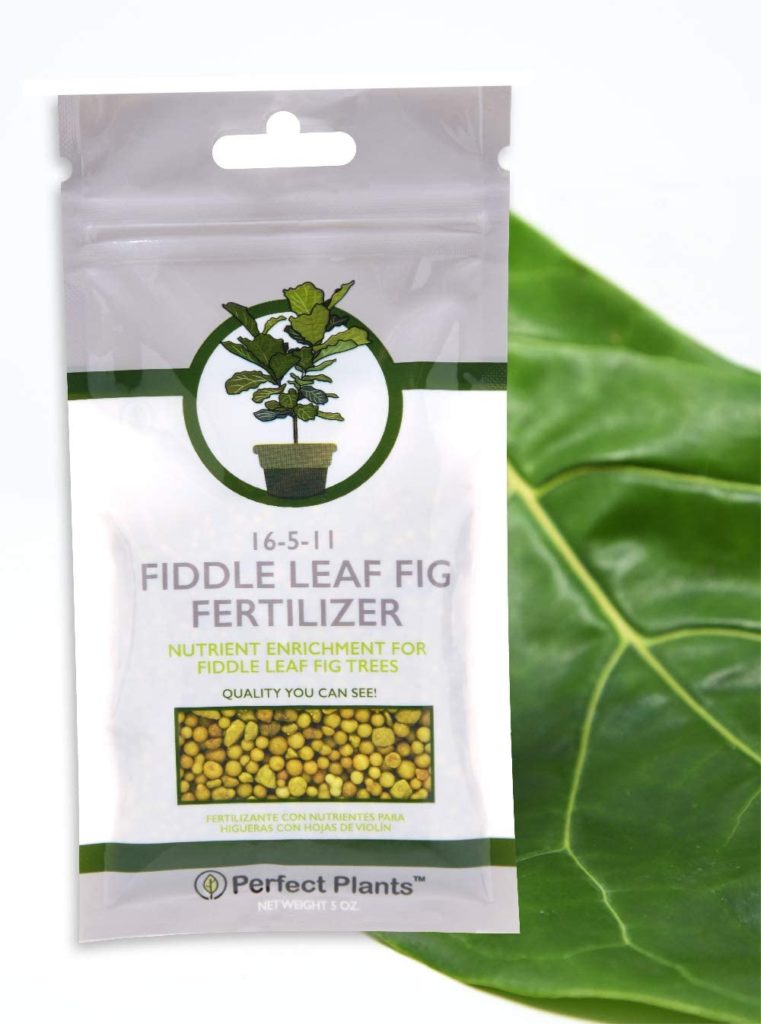




Hey, Marcia! Thanks for reading :) gosh, that's a great idea to double up on your watering globe and spike.…